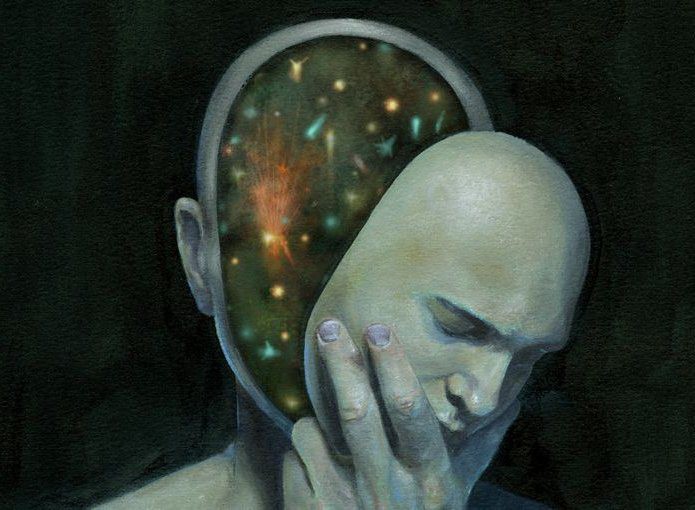Yoga
Tapasya of Love — from human love to divine Love
Abstract
For those of us who have loved, or even tried to, know the obstacles that come on the way from within the being or expecting, demanding, controlling, in the name of love. And yet, we all start from there, but have also the potential to refine and purify our love to a more self-forgetful, self-offering kind of love, full of warmth, humility, wisdom and compassion. This article explores our starting-point of human love, a mixture of expectations and demands as a step towards getting closer to our true nature of love, the divine Love.
Love: a misused word
Love. A word, most innocent, most misused and probably many of us won’t even want to use it owing to the fact that the more we mature in life, if we are sensitive enough, we realise that we have actually been misusing the word. Most of the time when we say, ‘I love you’, it plainly means that I want something from you. I want you to fulfil these expectations, I want you to agree to what I am saying, I want you to please me and my requests. But we won’t go into the fact that we have no clue of what ‘I’ is and what ‘you’ is. But in this article we will not go into those details for the time being.
And so, gradually as we grow in consciousness, we become aware of our hidden demands and expectations and wanting to control in the name of love. We slowly wake up to the fact that we really have been misusing or using the word love inappropriately. We have no clue of what true love is, what divine love is. Yet that doesn’t stop us from the so-called falling in love. We fall in love, where there is of course some amount of pure love, but if the rest is a mixture of expectations, demands, agreements, transactions, etc. However, this is our base. This human love, so full of a mixture of ego and its cravings, its attachments and its continuing sufferings, is the base for us to have a glimpse of divine Love, and to chart the long and arduous journey towards pure Love. Love that just is, forever open, forever available, forever accepting and embracing. Love that has the power to turn devils into compassionate, and wise, soft-hearted fellows. Love that has the power to turn foes into friends. Love that never settles with something yet to be refined and yet to be purified. Love is a force of purification which transforms, changes, sanctifies, if we allow it to do its work on us. It seems like all the pangs and sufferings coming from human love are worth it, if we are able to learn our lessons and take it in a way of sādhanā, of yoga, and hence move towards more and more purified love, a love that gives itself without expectations and demands, because it doesn’t really know how to be otherwise.
Rungs of Love and the mixture
The Mother, the manifestation of divine Love herself, identifies the Rungs of Love in her Agenda:
“At first one loves only when one is loved….
That’s the usual state of human beings. Someone’s vibration of love has to come to awaken love, otherwise they are inert.
Next one loves spontaneously…
That’s already a slightly more evolved humanity. One feels love all of a sudden; one meets someone or something — ah! — and it comes. Only…
…but one wants to be loved in return.
One very much wants to be loved in return!
Further on, one loves even if one is not loved…
Those are generally people who have reached a fairly advanced yogic state.
“…but one still wants one’s love to be accepted.
Yes, that’s an experience I personally had. There is a time when one is quite capable of loving without response, one is above the need to be loved, but one still has… not positively a need, but, at least, a wish that one’s love may be felt and be effective.
Afterwards, it makes one smile.
And finally one loves purely and simply without any other need or joy than that of loving.
That, to me, according to my personal experience, is really omnipotence.
It’s a power than can achieve anything — anything at all. Nothing is impossible to it (1).”
If you have ever loved, you would know pretty well about — ‘I love you, so why don’t you love me too.’ In our ordinary state of human consciousness, it comes by default, as if ingrained in our fabric, this clinginess, this demanding nature; owing to the sense of incompletion we feel in the egoistic consciousness, we just keep on trying to fulfill the void by anything on the way, but alas, nothing can ever fulfil it. But it is not an easy state to be, for demanding, expecting, etc. from others, drains our energies, weakens us. And hence it clearly tells us that it is not really a natural state for us. No one has ever been fulfilled and content and happy and joyous in a state of desiring, wanting, expecting others to fulfil their love. It also shows us how the desiring vital and other vibrations, like the vibration of desire, mixes itself in love and complicates things.
Mother talks about this in the Agenda:
“But then, the remarkable thing is that the Vibration (what we could call the quality of the vibration that comes from the Lord) is constructive: it constructs, it is peaceful and luminous; while that other vibration, of desire and such like, complicates, destroys and confuses, it twists things — confuses and distorts them, twists them. And it takes away the light: it makes for a dullness, which can be intensified with violent movements to the point of very dark shadows. But even where there is no passion, where passion doesn’t interfere, that’s how it is. You see, the physical reality has become nothing but a field of vibrations mingling together and, unfortunately, clashing together too, in conflict with one another. And the clash, the conflict, is the climax of that kind of turmoil, of disorder and confusion created by certain vibrations, which are ultimately vibrations of ignorance (they come because people don’t know, they are vibrations of ignorance), and are too small, too narrow, too limited — too short. The problem isn’t seen from a psychological standpoint at all: it’s nothing but vibrations… (2).”
I feel that it is our human journey, to begin from the base of human love, full of this mixture of wants, demands, desires, expectations, and then to suffer through them enough to get all of the mixture burnt, so that only pure Love remains. It is up to us, at which level we feel like stopping or give up owing to the pain involved, or else we take it in the right attitude of that of a learner, toiling through, and learning through all the failures, struggles, and follies, shamelessly moving forward. There comes the importance of taking consciously all life as yoga. If I consciously take all the life experiences as a way to unite myself with the summits of consciousness, shedding veils of ignorance in the process, it is impossible that at any step I would like to stop and say, I give up. Such is the mystery of this adventurous path towards purification. It seems like suffering will not cease if I do not unite myself with higher and higher summits of consciousness. Such is the love the Divine has for us, that it will not stop the process of purification, making us the best possible versions of ourselves in the process of toil.
Let us continue to be on this path of purification, and keep going further on this journey of union with our highest self, using every experience that comes on the way, as nothing but a raw material for progress. All the innumerable experiences are very much required, as Mother says in her Prayers and Meditations (November 28, 1912):
“…..That is why it seems to me that the work must be long and slow even for the best and that striking conversions cannot be integral. They change the orientation of the being, they put it definitively on the straight path; but truly to attain the goal none can escape the need of innumerable experiences of every kind and every instant (3).”
References
1. The Mother. Mother’s Agenda Volume 7. Paris: Institut des Recherches EEvolutives; English translation 1980, p. 53.
2. The Mother. Mother’s Agenda Volume 4; English translation 1979, p. 243.
3. The Mother. The Collected Works of the Mother, Volume 1. 2nd ed. Pondicherry: Sri Aurobindo Ashram Trust; 2003, p. 7.
Monica Gulati, a learner and a seeker, is based in Gurgaon, India and an editor of NAMAH.
Share with us (Comments,contributions,opinions)
When reproducing this feature, please credit NAMAH,and give the byline. Please send us cuttings.




